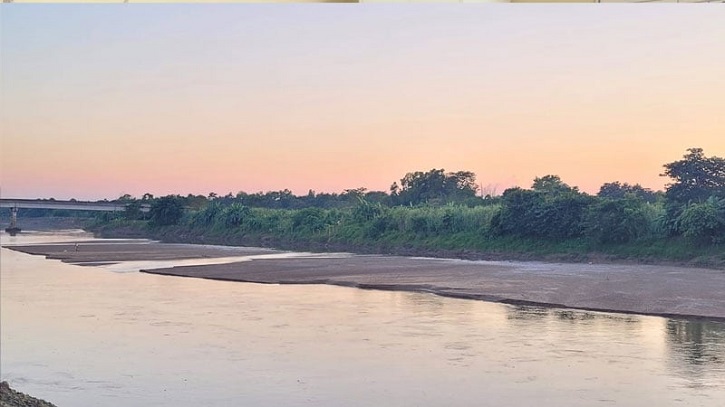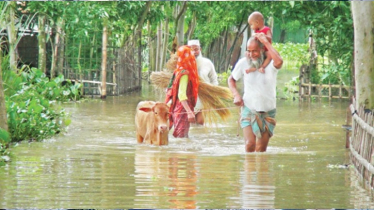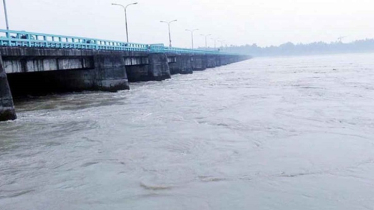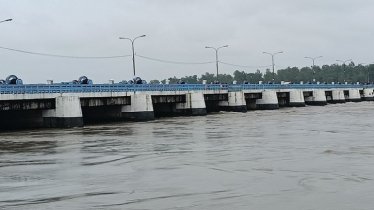
The water-rich district of Moulvibazar, known for its haors, canals, and rivers, is now facing a serious threat to its aquatic ecosystems as major water bodies are rapidly losing navigability due to heavy siltation. Among these, the Manu River—flowing through Kulaura and two other upazilas—is the district’s principal water channel. Originating from India’s upstream region, the river enters Bangladesh through Sharifpur in Kulaura and flows for 74 kilometers before merging with the Kushiyara River at Manumukh in Moulvibazar.
The condition of the Manu River and nearby water bodies became starkly visible during the devastating floods of 2022 and 2024. Prolonged lack of dredging has caused severe navigability loss, as heavy sediment deposited during floods has filled large sections of the riverbed. The resulting silt layers have reduced water depth, formed shoals in multiple areas, and increased flood vulnerability. With diminished water-holding capacity, seasonal rains now lead to frequent embankment breaches and widespread flooding.
A visit to the riverbanks in areas such as Dholia, Sukhnavi, Rajapur, Kotarkona, Ismailpur, Ronchap, and Nishchintpur revealed vast sandbars that have emerged midstream. These newly formed chars have accelerated erosion; in the last monsoon, nearly 300 feet of embankment in Shikria area faced collapse. The floods of 2022 and 2024 also caused extensive riverbank damage in Miapara, Sandrabaz, and Shalon areas of Kulaura upazila.
Local residents said the long absence of dredging has not only affected navigation but also reduced native fish production, damaging livelihoods and agriculture. Farmers and villagers including Tazu Mia, Mobarak Ali, Ismail Ali, Abbas Ali, and Farid Ahmed explained that accumulated silt has choked the river. During monsoon, the swollen waters inundate farmlands, causing significant crop loss. They also lamented that native fish once abundant in the Manu have now nearly disappeared.
Boatmen Rubel Ali from Rajapur Ferry Ghat and Harun Mia from Dholia Ghat said that the river’s depth has decreased drastically. “The riverbed is filled with silt, making navigation impossible,” Rubel said. “During the dry season, we use bamboo bridges or walk across the riverbed. In monsoon, the water overflows embankments.”
Kulaura Upazila Senior Fisheries Officer Abu Masud said, “Siltation in the Manu, Phanai, and Hakaluki wetlands has reduced their water-holding capacity, affecting fish breeding and biodiversity. We have proposed dredging from the Indian border area of Manu River up to Kotarkona Bridge, including the Phanai River and Kangli Beel in Hakaluki Haor.”
Executive Engineer of the Moulvibazar Water Development Board, Khaled Bin Walid, said, “Some sediment removal has been done in certain sections of the Manu River. Following two consecutive floods, we plan to submit a new proposal for removing the newly formed shoals and conducting large-scale dredging.”
Upazila Nirbahi Officer Md. Mohiuddin confirmed that local residents have already submitted applications for sediment removal, embankment repairs, and river dredging. “We will discuss the matter with the relevant authorities to restore the river’s navigability,” he said.
Mokhles Mia, a fisherman from Gojbhag village, said, “There was a time when we caught fish as soon as we cast our nets. Now, the river’s depth is gone, and fish breeding grounds have vanished. The disrupted water flow has destroyed fish diversity.”
Environmental activist Faizul Haque expressed concern, saying, “Almost every river in the country is under threat, especially in the Sylhet region. Human negligence and climate impacts are destroying these water systems. If rivers like the Manu disappear, it will severely disturb Kulaura’s ecological balance.” He urged authorities to take immediate action through timely dredging and embankment protection. “If we fail to revive the Manu River with expert guidance and research-based restoration,” he warned, “the entire region’s socio-economic stability could collapse, and riverbank communities might face displacement.”





